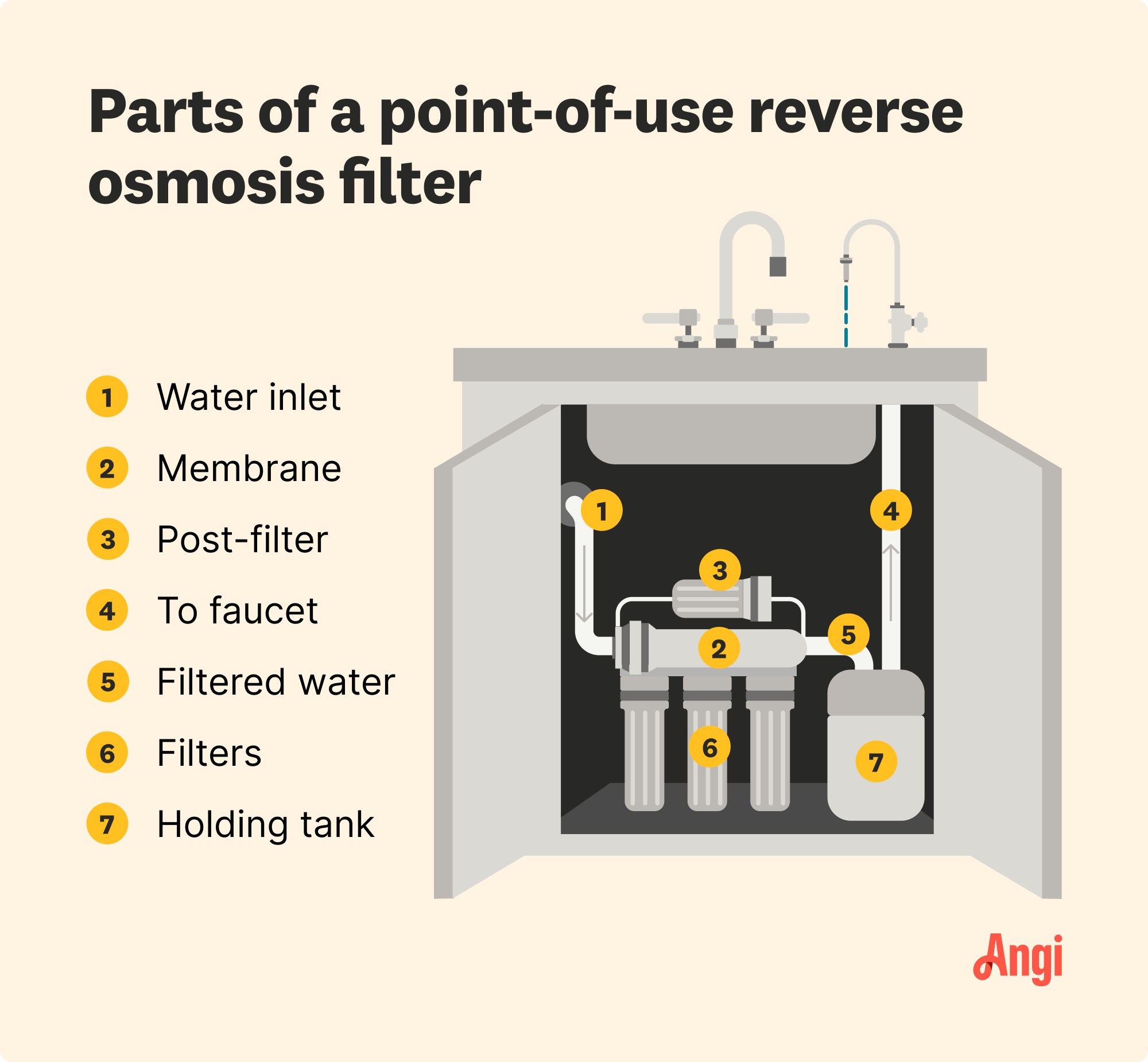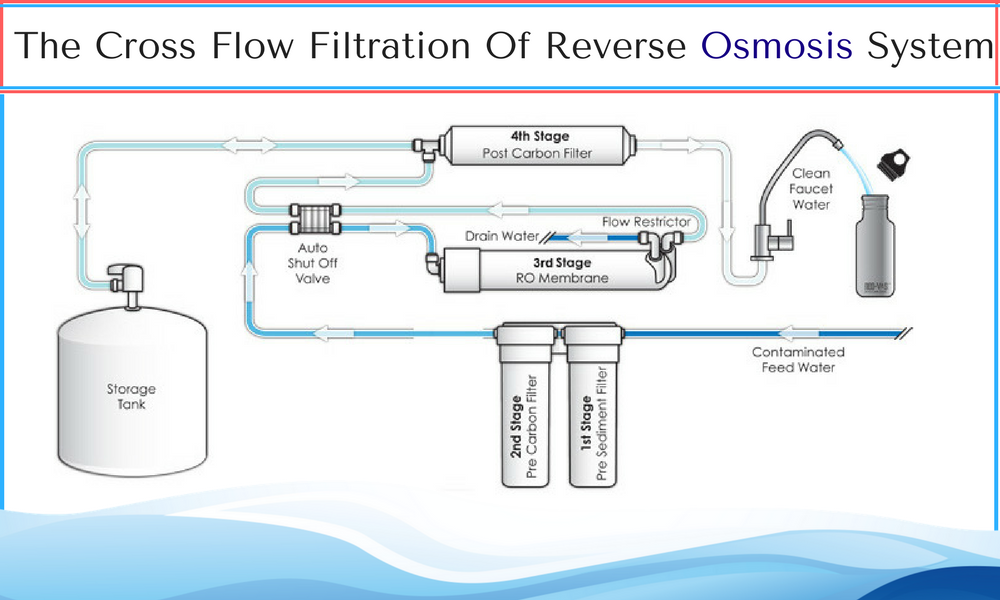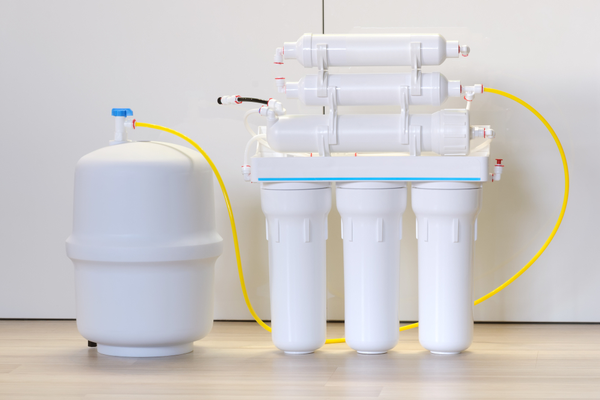Are you curious about how clean water reaches your glass? Understanding what reverse osmosis water purification is can change the way you think about the water you drink every day.
This powerful process removes harmful impurities and makes your water safer and better tasting. Keep reading, and you’ll discover how reverse osmosis works, why it matters for your health, and how it can give you peace of mind with every sip.
Your journey to clearer, fresher water starts here.
How Reverse Osmosis Works
Reverse osmosis is a way to clean water by removing bad particles. It uses pressure to push water through a special filter.
This process makes water safe to drink by removing impurities like salts and chemicals.
Basic Principle
Reverse osmosis works by moving water from a high to low concentration area. It uses pressure to push water through a membrane.
The membrane blocks harmful substances but lets clean water pass through. This removes unwanted particles from the water.
Membrane Function
The membrane is like a thin filter with tiny holes. These holes are small enough to stop salts, bacteria, and other impurities.
Only water molecules can pass through, making the water pure and safe to use.
Stages Of Filtration
Reverse osmosis filters water in several steps. Each step removes different types of impurities.
- Pre-filtration removes large particles like dirt and rust.
- Carbon filter takes out chlorine and bad tastes.
- Water passes through the membrane to remove salts and tiny particles.
- Post-filtration polishes water for a clean taste.

Credit: johntheplumber.ca
Benefits Of Reverse Osmosis
Reverse osmosis is a water purification process that removes impurities. It uses a special filter to clean water.
This method helps provide safe and clean water for drinking and cooking. It is popular in homes and businesses.
Improved Water Quality
Reverse osmosis improves water taste and clarity. It removes bad odors and colors from the water.
The process makes water fresh and pure. This helps people enjoy drinking water more often.
Removal Of Contaminants
Reverse osmosis removes many harmful substances. It filters out chemicals, heavy metals, and bacteria.
- Chlorine and fluoride
- Lead and arsenic
- Salt and nitrates
- Viruses and germs
This makes water safer to drink and use in cooking. It lowers the risk of waterborne illnesses.
Health Advantages
Drinking reverse osmosis water helps protect your health. It limits exposure to toxins and pollutants.
Clean water supports better digestion and hydration. It also helps keep skin clear and healthy.
Common Applications
Reverse osmosis (RO) water purification removes impurities from water by forcing it through a special filter. This process helps create clean, safe drinking water. Many places use RO systems for different needs.
The technology is useful in homes, businesses, and emergency situations. Each use has its own benefits and setup requirements.
Residential Use
Many families install reverse osmosis systems in their kitchens. These systems improve taste and remove harmful chemicals from tap water.
RO units are compact and fit under the sink. They provide purified water for drinking and cooking.
- Removes chlorine and fluoride
- Reduces heavy metals like lead
- Improves water taste and odor
- Easy to install and maintain
Commercial And Industrial Use
Businesses use RO systems to get large amounts of pure water. Industries like food processing and pharmaceuticals need clean water for their products.
RO helps protect machines by removing minerals that cause damage. It also helps meet health and safety standards.
- Food and beverage production
- Pharmaceutical manufacturing
- Power plants and cooling systems
- Laboratories and research centers
Emergency And Portable Systems
Portable reverse osmosis units provide clean water in emergencies. These systems help during natural disasters or when traveling to remote areas.
They are lightweight and easy to carry. Users can get safe drinking water from almost any source.
- Disaster relief and rescue missions
- Camping and outdoor activities
- Military and field operations
- Remote villages and locations
Components Of Ro Systems
Reverse osmosis (RO) systems clean water by removing impurities. They use several parts that work together.
Each part plays a special role to make water safe and pure. Knowing these parts helps you understand how RO works.
Pre-filters
Pre-filters remove large particles like dirt and rust from water. They protect the RO membrane from damage.
Common pre-filters include sediment filters and carbon filters. Sediment filters trap sand and dirt. Carbon filters reduce chlorine and bad tastes.
- Remove large particles
- Protect the RO membrane
- Improve water taste and odor
Ro Membrane
The RO membrane is the heart of the system. It removes tiny impurities and dissolved salts from water.
Water passes through the membrane under pressure. The membrane blocks harmful substances but lets clean water pass.
- Removes dissolved salts and contaminants
- Blocks bacteria and viruses
- Allows clean water to flow through
Post-filters And Storage Tanks
Post-filters clean the water again after the RO membrane. They improve taste and remove any leftover odors.
The storage tank holds purified water until you need it. It keeps water ready for quick use.
- Post-filters enhance water taste
- Remove any remaining impurities
- Storage tanks store clean water
- Provide water on demand
Installation And Maintenance Tips
Reverse osmosis water purification systems clean water by removing impurities. Proper installation and care keep the system working well.
Follow simple tips to choose, install, and maintain your reverse osmosis system for safe, clean water.
Choosing The Right System
Pick a system that fits your water needs and space. Check the water flow rate and storage tank size.
Look for systems with easy filter changes and good reviews. Consider if you want extra features like UV light.
- Match system size with daily water use
- Check for certification and quality parts
- Choose a system with clear instructions
- Plan for installation space under the sink or nearby
Regular Filter Replacement
Filters clean out dirt and chemicals. Replace them on time to keep water pure and system working well.
Most filters need changing every 6 to 12 months. The membrane may last 2 to 3 years.
- Change pre-filters every 6 months
- Replace carbon filters every 6 to 12 months
- Swap the RO membrane every 2 to 3 years
- Follow the system manual for exact times
Troubleshooting Common Issues
If water flow slows or tastes strange, check filters and leaks. Fix problems quickly to avoid damage.
Make sure water pressure is right. Low pressure can reduce water output. Tighten loose connections.
- Check and replace clogged filters
- Inspect all tubes and fittings for leaks
- Test water pressure and adjust if needed
- Flush the system if water tastes odd

Credit: www.angi.com
Limitations And Considerations
Reverse osmosis water purification is popular for cleaning water. It removes many impurities. Still, there are some limits and things to think about.
Understanding these limits helps decide if reverse osmosis is right for your needs.
Water Wastage
Reverse osmosis systems use water to flush out impurities. This process wastes some water. For every gallon of clean water, several gallons may be wasted.
Water wastage can be a concern in areas with limited water supply.
- Typical waste ratio is 3 to 1 or higher
- Newer systems reduce water waste
- Wastewater can sometimes be reused for chores
Mineral Removal
Reverse osmosis removes many minerals from water. This includes both harmful and beneficial minerals. Drinking water may lose natural minerals like calcium and magnesium.
Low mineral levels can change the taste and reduce health benefits of water.
- Some systems add minerals back after purification
- Mineral removal can affect water pH
- Consider mineral supplements if needed
Cost Factors
Reverse osmosis units can be expensive to buy and maintain. Filters and membranes need regular replacement. Electricity may be required for some systems.
Costs add up over time, which can affect long-term use.
- Initial setup can cost from a few hundred dollars
- Filter changes typically every 6 to 12 months
- Energy use varies by system size and type
Comparing Ro With Other Purification Methods
Reverse osmosis (RO) is a popular way to clean water. It uses a special filter to remove many impurities. There are other ways to purify water too. Each one works in a different way and has its own pros and cons.
Knowing how RO compares with other methods helps you choose the right water purifier. Let’s look at activated carbon filters, UV purification, and distillation.
Activated Carbon Filters
Activated carbon filters use charcoal to trap chemicals and bad tastes. They work well for removing chlorine and some pesticides. These filters improve the smell and flavor of water.
They do not remove all germs or minerals. These filters are usually cheaper and need replacement often. They work best when water is already clean or has low contamination.
- Removes chlorine and chemicals
- Improves taste and smell
- Does not remove all bacteria or viruses
- Needs regular filter changes
Uv Purification
UV purification uses ultraviolet light to kill bacteria and viruses. It is very effective against germs. It does not change the water’s taste or remove chemicals.
This method needs electricity to work. It does not filter out dirt or particles. UV systems work well after other filters clean the water first.
- Kills bacteria and viruses quickly
- Does not remove chemicals or particles
- Requires electricity to operate
- Works best with pre-filtered water
Distillation
Distillation boils water and collects the steam. This process removes most impurities and minerals. It makes very pure water but uses a lot of energy.
Distilled water may taste flat because it lacks minerals. The process is slow and needs special equipment. It is good for removing heavy metals and salts.
- Removes most minerals and impurities
- Uses high energy to boil water
- Produces very pure but flat-tasting water
- Slow process with special equipment

Credit: medium.com
Frequently Asked Questions
What Is Reverse Osmosis Purification Process?
Reverse osmosis is a water purification method that removes contaminants by forcing water through a semi-permeable membrane. This process filters out impurities like salts, bacteria, and chemicals, providing clean and safe drinking water. It’s widely used in homes and industries for its effectiveness in delivering high-quality water.
How Does Reverse Osmosis Work?
Reverse osmosis works by applying pressure to water, pushing it through a semi-permeable membrane. This membrane blocks contaminants, allowing only pure water to pass through. The process efficiently removes particles like salts, bacteria, and heavy metals. It’s a reliable method to produce clean drinking water.
Is Reverse Osmosis Water Safe To Drink?
Yes, reverse osmosis water is safe to drink. The process effectively removes harmful contaminants like bacteria, chemicals, and heavy metals. This ensures the water is clean and free from impurities. However, some minerals are also removed, so remineralization may be recommended for optimal health benefits.
What Are The Benefits Of Reverse Osmosis?
Reverse osmosis offers several benefits, including removing harmful contaminants and improving taste and odor. It provides clean, safe drinking water by filtering out impurities like bacteria and chemicals. Additionally, it’s cost-effective and environmentally friendly compared to bottled water, reducing plastic waste.
Conclusion
Reverse osmosis water purification removes many harmful substances. It uses a special filter to clean water. This process makes water safer and better to drink. Many homes and businesses use reverse osmosis systems today. Clean water helps keep people healthy and hydrated.
Choosing the right water purification method matters a lot. Reverse osmosis offers a reliable way to get pure water. Easy to maintain and efficient, it suits many needs. Pure water supports a healthy lifestyle every day.

